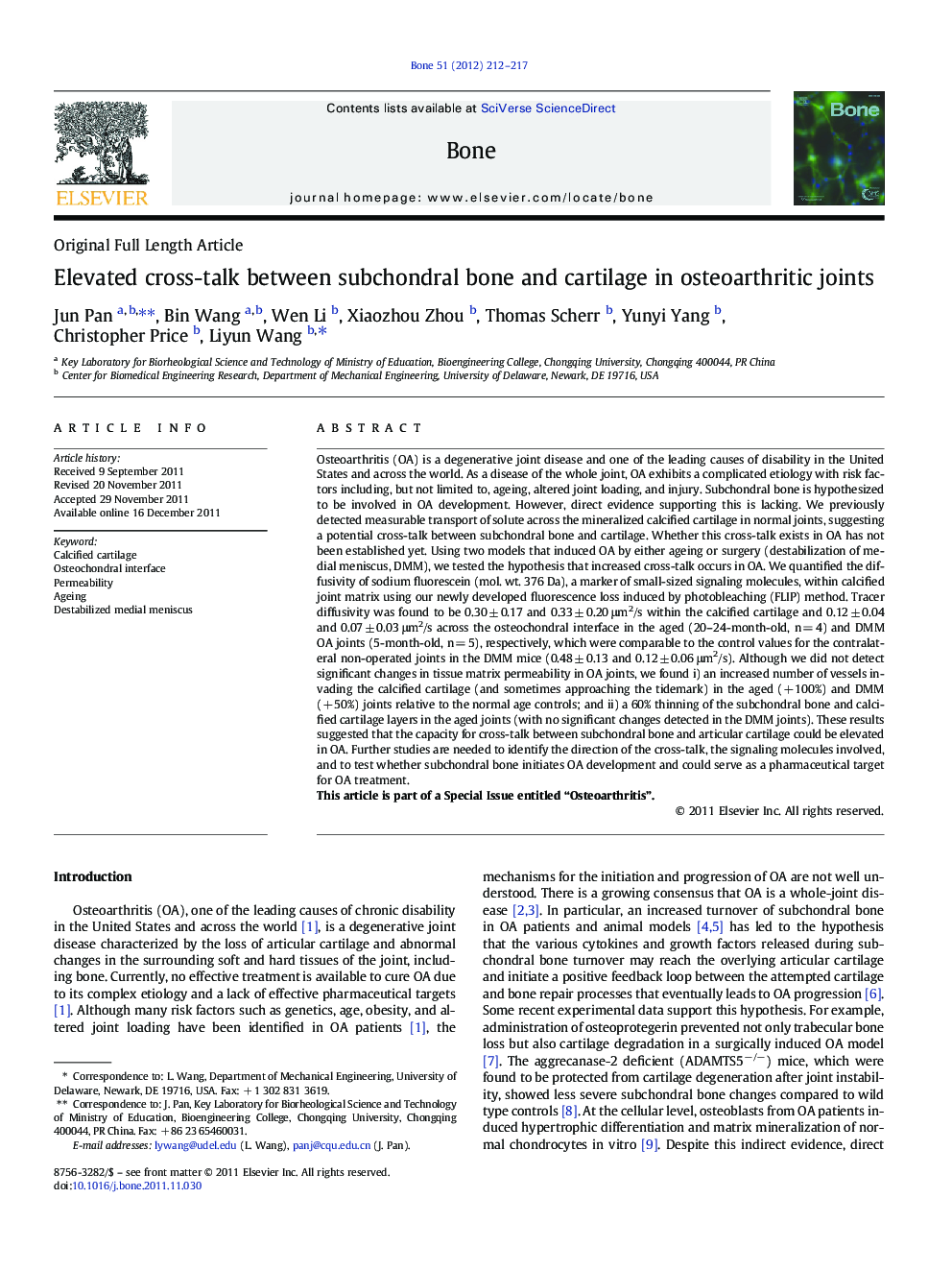| کد مقاله | کد نشریه | سال انتشار | مقاله انگلیسی | نسخه تمام متن |
|---|---|---|---|---|
| 2779316 | 1153266 | 2012 | 6 صفحه PDF | دانلود رایگان |

Osteoarthritis (OA) is a degenerative joint disease and one of the leading causes of disability in the United States and across the world. As a disease of the whole joint, OA exhibits a complicated etiology with risk factors including, but not limited to, ageing, altered joint loading, and injury. Subchondral bone is hypothesized to be involved in OA development. However, direct evidence supporting this is lacking. We previously detected measurable transport of solute across the mineralized calcified cartilage in normal joints, suggesting a potential cross-talk between subchondral bone and cartilage. Whether this cross-talk exists in OA has not been established yet. Using two models that induced OA by either ageing or surgery (destabilization of medial meniscus, DMM), we tested the hypothesis that increased cross-talk occurs in OA. We quantified the diffusivity of sodium fluorescein (mol. wt. 376 Da), a marker of small-sized signaling molecules, within calcified joint matrix using our newly developed fluorescence loss induced by photobleaching (FLIP) method. Tracer diffusivity was found to be 0.30 ± 0.17 and 0.33 ± 0.20 μm2/s within the calcified cartilage and 0.12 ± 0.04 and 0.07 ± 0.03 μm2/s across the osteochondral interface in the aged (20–24-month-old, n = 4) and DMM OA joints (5-month-old, n = 5), respectively, which were comparable to the control values for the contralateral non-operated joints in the DMM mice (0.48 ± 0.13 and 0.12 ± 0.06 μm2/s). Although we did not detect significant changes in tissue matrix permeability in OA joints, we found i) an increased number of vessels invading the calcified cartilage (and sometimes approaching the tidemark) in the aged (+ 100%) and DMM (+ 50%) joints relative to the normal age controls; and ii) a 60% thinning of the subchondral bone and calcified cartilage layers in the aged joints (with no significant changes detected in the DMM joints). These results suggested that the capacity for cross-talk between subchondral bone and articular cartilage could be elevated in OA. Further studies are needed to identify the direction of the cross-talk, the signaling molecules involved, and to test whether subchondral bone initiates OA development and could serve as a pharmaceutical target for OA treatment.This article is part of a Special Issue entitled “Osteoarthritis”.
► Bone-cartilage cross-talk examined in two models (surgical DMM and ageing) of OA.
► Decreased (but not significant) tissue permeability in mineralized ECM of OA joints.
► Increased vessels invasion in aged (+100%) and DMM (+50%) joints vs. controls.
► 60% thinning of thickness in aged joints and no changes in DMM joints vs. controls.
► Bone-cartilage cross-talk elevated in the two OA models via different mechanisms.
Journal: Bone - Volume 51, Issue 2, August 2012, Pages 212–217